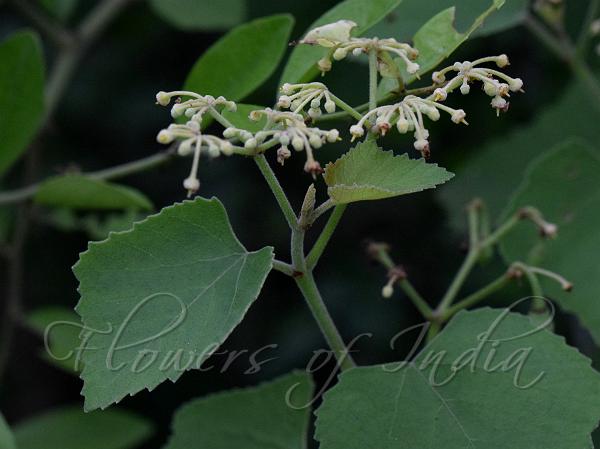|
| South Indian Treebine |
|

|

| File size | 561261 |
| Original date | 7/22/16 4:21 PM |
| Resolution | 2048 x 1536 |
| Flash | Flash did not fire |
| Focal length | 90.0mm |
| Exposure time | 1/500s |
| Aperture | 9.0 |
| Focus Distance | |
| Metering Mode | Multi-segment |
| Camera make | NIKON CORPORATION |
| Camera model | NIKON D3300 |
| Sensor type | OneChipColorArea |
|
|
|
|
Photo: |
Botanical name: Cissus vitiginea Family: Vitaceae (Grape family)
Synonyms: Cissus angulata
Synonyms: Cissus angulata
South Indian Treebine is a climbing, foetid shrubs.
Bark is blackish to reddish; branchlets densely pubescent, swollen at
node, tendril simple, bifid or branched. Leaves are simple, 5-angular
or deeply lobed, 4-8 x 4-7.5 cm, ovate-orbicular, base flat t
oheart-shaped, margin irregularly toothed, tip pointed or blunt,
velvety, basally 3-nerved, stalk up to 6 cm long, stipules about 2.5 mm
long, triangular, pubescent. Flowers are borne in axillary or
leaf-opposed umbellate cymes. Peduncle are up to 5 cm long. Calyx is
about 2 mm long, cup-shaped, pubescent. Petals are 4, yellow, about 2.5
mm long ovate, obtuse, recurved. Stamens are 4, filaments green,
anthers rotund, yellow. Disk is more or less 4-lobed, yellow. Berry is
ovoid to obovoid, purplish-blue, pendulous. South Indian Treebine is
found in South India and Sri Lanka.
| Identification credit: S. Kasim | Photographed in Vellore, Tamilnadu. |
• Is this flower misidentified? If yes,